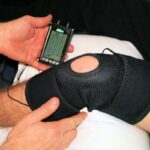If the pain you’re feeling is in a muscle that contains trigger points, trigger point injections might be a treatment option.
What is a Trigger Point?
A trigger point is basically an area of tenderness also known as a taut band of muscle that can hurt when you touch it. A local twitch response can often be elicited by snapping palpation of a trigger point. This response is a clinically valuable objective sign that confirms the presence of a trigger point.
What Are Trigger Point Injections?
Trigger point injections (TPI) are when a health care professional uses a small needle to disrupt the mechanical or chemical effect of the trigger point causing of the muscle fibers to become inactive. Sometimes, there is medication inside the injection such as local anesthetics like lidocaine and sometimes a corticosteroid.
At B3 Medical we use a local anesthetic along with Traumeel, a natural treatment used to relieve pain and inflammation. If there is no medication, it is called dry needling. The needle itself can make the trigger point inactive.
The injections only take a few minutes and can provide long-lasting relief. The injection relaxes the muscle, improving blood flow and reducing inflammation.
What Can Trigger Point Injections Help?
When muscles do not relax, they can form knots. Sometimes you can feel the knots under the skin. The trigger points can cause pain in another part of the body because they irritate the nerves around them.
TPI can help many muscle groups including the arms, legs, lower back, and neck. They can also help with other pain problems like fibromyalgia, tension headaches, and myofascial pain syndrome.
One-shot can often relieve the pain, but for more chronic conditions, patients might need a series of injections. The frequency depends on the type of medication being administered during the injection.
Potential Complications
Sometimes, patients might have a bit of pain at the site of the injection that often goes away after a few days. Injection site pain is more common after dry-needling into the trigger point. Over-the-counter medications can help with the pain.
With steroid medications, there is also a risk of a dent in the skin because the steroids can shrink the fat under the skin.
Why Try Trigger Point Injections?
TPI is minimally invasive and does not take very long. Many types of doctors can do it in their offices.
When physical therapy has not worked, or the pain is too intense for physical therapy, trigger point injections might help with the pain. Trigger point injections can loosen muscles and muscle groups, providing relief. If you’re experiencing chronic pain, TPI might be an option if other therapies have not worked.
If you think you might want to try trigger point injections, contact us at B3 Medical. Our trained staff can help you decide what types of pain relief are right for you.



























